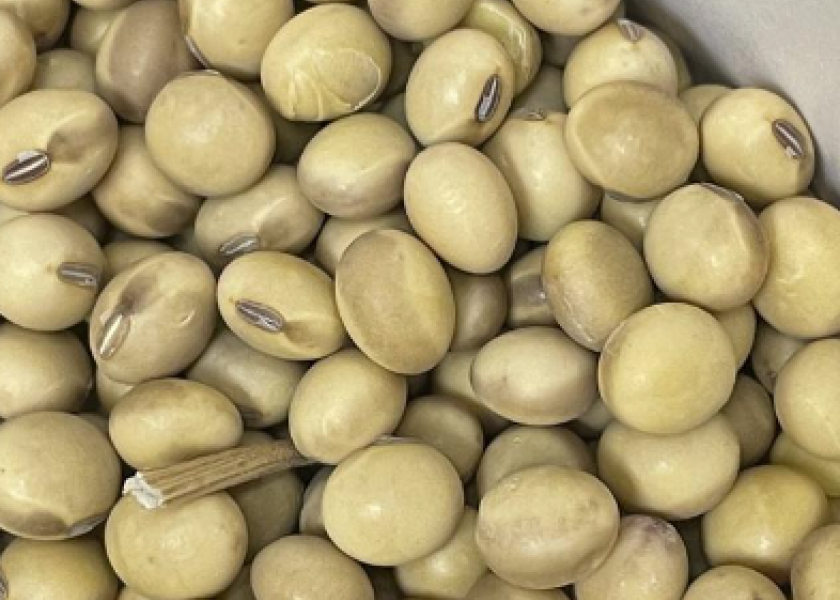USDA to Address ‘Soybeans of Other Colors’ Issue, Grading Standards

Current U.S. soybean grading standards may need an update, according to a USDA Agricultural Marketing Service (AMS) announcement on Tuesday. The agency reported the Federal Grain and Inspection Service (FGIS) will be seeking public comment on a proposal to make changes to the U.S. Standards for Soybeans.
At the heart of the request for public comment is an issue called “Soybeans of Other Colors” (SBOC), which figures into grading factors determining soybean quality and can impact the price farmers receive for their crop. Affected soybeans are in varying colors and shades of colors, ranging from green, black and brown to bicolored.
In the past two years, the soybean industry has experienced an increased prevalence of SBOC, with Extension agronomists and others in the agriculture community noting an uptick in color variations across soybean producing states. As of this past July, 25% of USDA certificates for U.S. No. 2 soybean or lower was due to SBOC, meaning the amount of SBOC in U.S. No. 1 soybean has increased threefold, according to Columbia Grain.
While color variations occur in soybeans annually, agronomists and others noted one technology, Enlist E3 soybean seed technology, has appeared to contribute more than other technologies to the issue.
“Following the 2021 harvest season, it became clear that Enlist E3 soybeans can produce soybean seed containing some off-colored soybeans, and the percentage of the seed with this SBOC appearance can be very large. Not all varieties produce this trait and this trait may not express itself in all fields,” said Seth Naeve, University of Minnesota Extension soybean agronomist, and Shawn Conley, University of Wisconsin-Madison soybean and small grains Extension agronomist, in a blog article available here: bit.ly/3FWSwcO
In an email to Farm Journal, Mike Dillon, vice president, Global Oilseed Portfolio, Corteva Agriscience, pointed out that soybean seed coat color depends on many factors, including genetics and environment (temperature, soil type, planting date and moisture during the growing season).
Specific to Enlist E3 soybeans, Dillon said the color variation typically appears as a light brown band connecting the ends of the hilum and/or light brown shadows on each side of the hilum. While the banding pattern appears distinct to Enlist E3 soybeans, similar shadow patterns have also been noted in response to cold-stress and/or virus infection (in other soybeans).
"We have conducted studies about the compounds contributing to seed coat color variation in Enlist E3 soybean hulls, and we published our findings in a peer-reviewed publication in Phytochemistry, available on the journal’s website (available here)," Dillon said.
“The publication shows that seed coat color variation is due to a localized accumulation of a complex of isoflavone and iron. Both of these compounds are naturally found in the seed coat (hull) of soybeans,” he added. “Corteva’s study also showed the level of these compounds in the seed coat and whole bean of Enlist E3 soybeans is comparable to non-Enlist E3 soybeans. Only a small portion of the total isoflavone and iron are involved in the colored complex. Furthermore, the Enlist technology does not produce any green or black soybeans.”
The USDA press release issued on Tuesday said the agency has received numerous requests from representatives of U.S. soybean producers and grain traders to remove SBOC as a grade-determining factor for describing the quality for soybeans (e.g., U.S. No 1 Yellow soybeans, U.S. No. 2 Yellow Soybeans, etc.).
“In response to these requests for changes to the soybean standard, USDA will implement notice and comment rulemaking, as required by USGSA, to receive comments from the public regarding whether SBOC should be considered an informational factor that does not impact soybean grade determinations,” the release said.
Historically, SBOC levels are low, rarely impacting the grade of soybeans. At the request of the Grain Inspection Advisory Committee (GIAC), FGIS conducted a study to evaluate whether the presence of SBOC had an impact on the quality of soybean protein and oil. The study found no significant differences in official protein or oil content. The study is available for review on the AMS-FGIS SBOC resource page.







